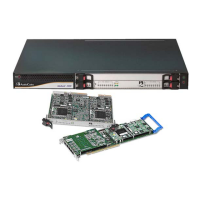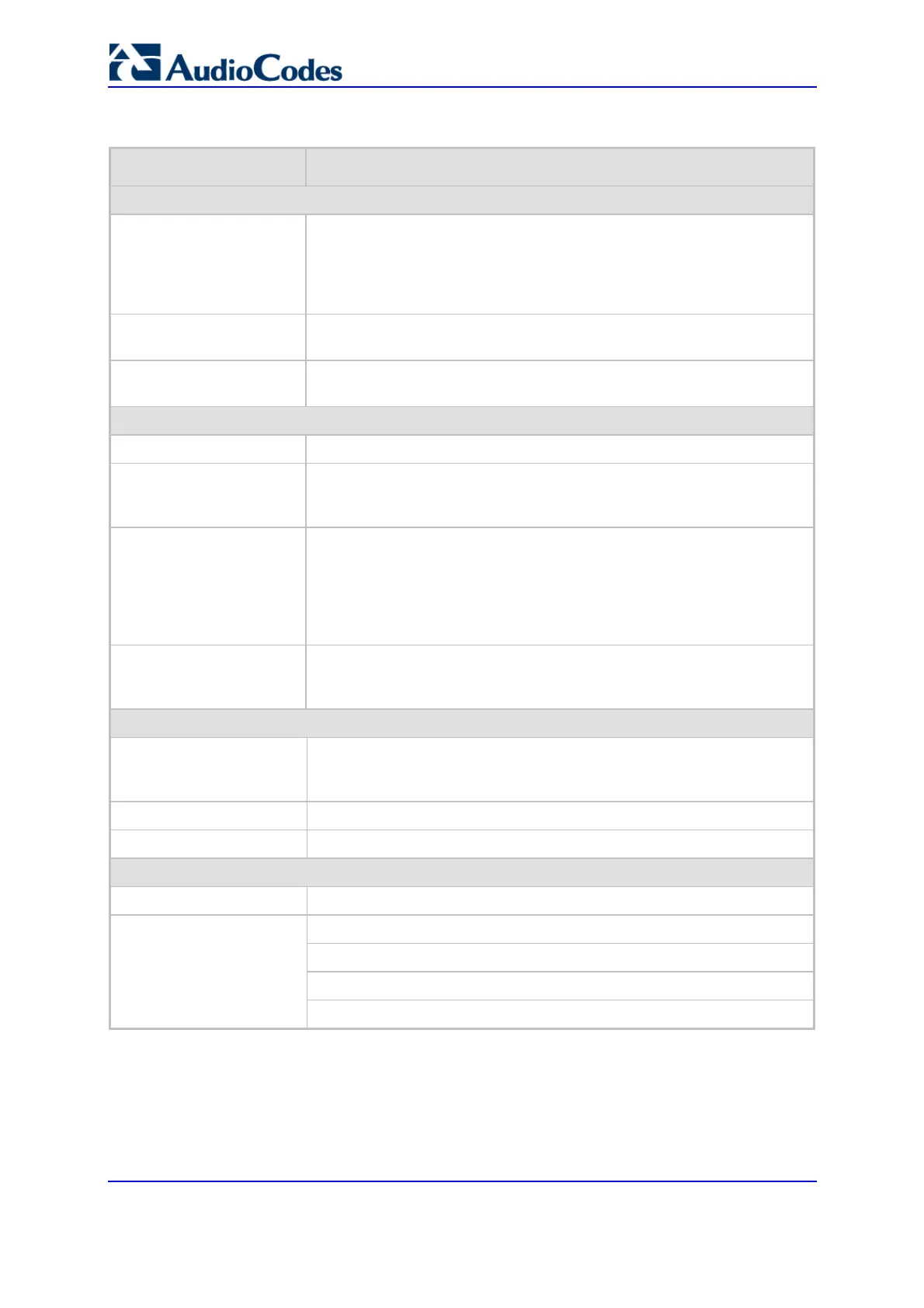SIP User's Manual 396 Document #: LTRT-68806
Mediant 2000 & TP-1610 & TP-260/UNI
Table 11-1: General Selected Technical Specifications
Function Specification
Fax and Modem Transport Modes
Real time Fax Relay
Group 3 real-time fax relay up to 14400 bps with auto fallback
Tolerant network delay (up to 9 seconds round trip delay)
T.30 (PSTN) and T.38 (IP) compliant (real-time fax)
CNG tone detection & Relay per T.38
Answer tone (CED or AnsAm) detection & Relay per T.38
Fax Transparency
Automatic fax bypass (pass-through) to G.711, ADPCM or NSE bypass
mode
Modem Transparency
Automatic switching (pass-through) to PCM, ADPCM or NSE bypass
mode for modem signals (V.34 or V.90 modem detection)
Protocols
VoIP Signaling Protocol
SIP RFC 3261
Communication
Protocols
RTP/RTCP packetization.
IP stack (UDP, TCP, RTP).
Remote Software load (TFTP, HTTP and HTTPS).
Telephony Protocols
PRI (ETSI Euro ISDN, ANSI NI2, 4/5ESS, DMS 100, QSIG, Japan
INS1500, Australian Telecom, New Zealand Telecom, Hong Kong
Variant, Korean MIC)
E1/T1 CAS protocols: MFC R2, E&M wink start,
Immediate start, delay start, loop start, ground start,
Feature Group B, D for E1/T1
In-Band Signaling
DTMF (TIA 464A)
MF-R1, MFC R2
User-defined Call Progress Tones
Diagnostics
Front panel Status LEDs
E1/T1 status
LAN status
Status of gateway (Fail, ACT, Power, and Swap Ready)
Syslog events
Supported by Syslog Server, per RFC 3164 IETF standard.
SNMP MIBs and Traps
SNMP v2c; SNMP v3
Management
Configuration
Configuration of gateway using Web browser or ini files
SNMP v2c; SNMP v3
Syslog, per RFC 3164
Web Management (via HTTP or HTTPS)
Management and
Maintenance
Telnet

